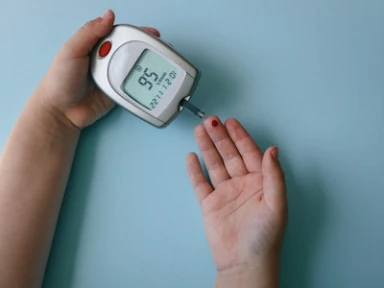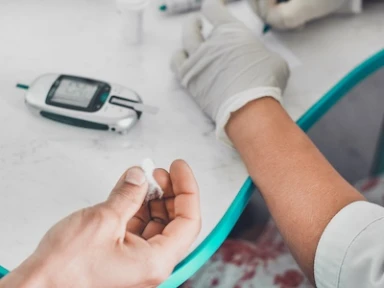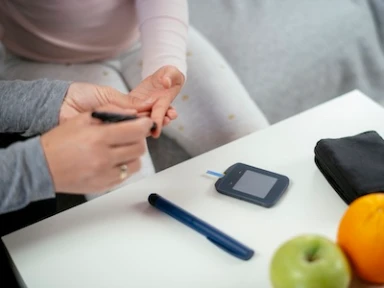Understanding Autoimmune T1D disease & Different Stages

A trigger initiates an autoimmune attack on the beta cells of the pancreas through autoreactive T cells 10
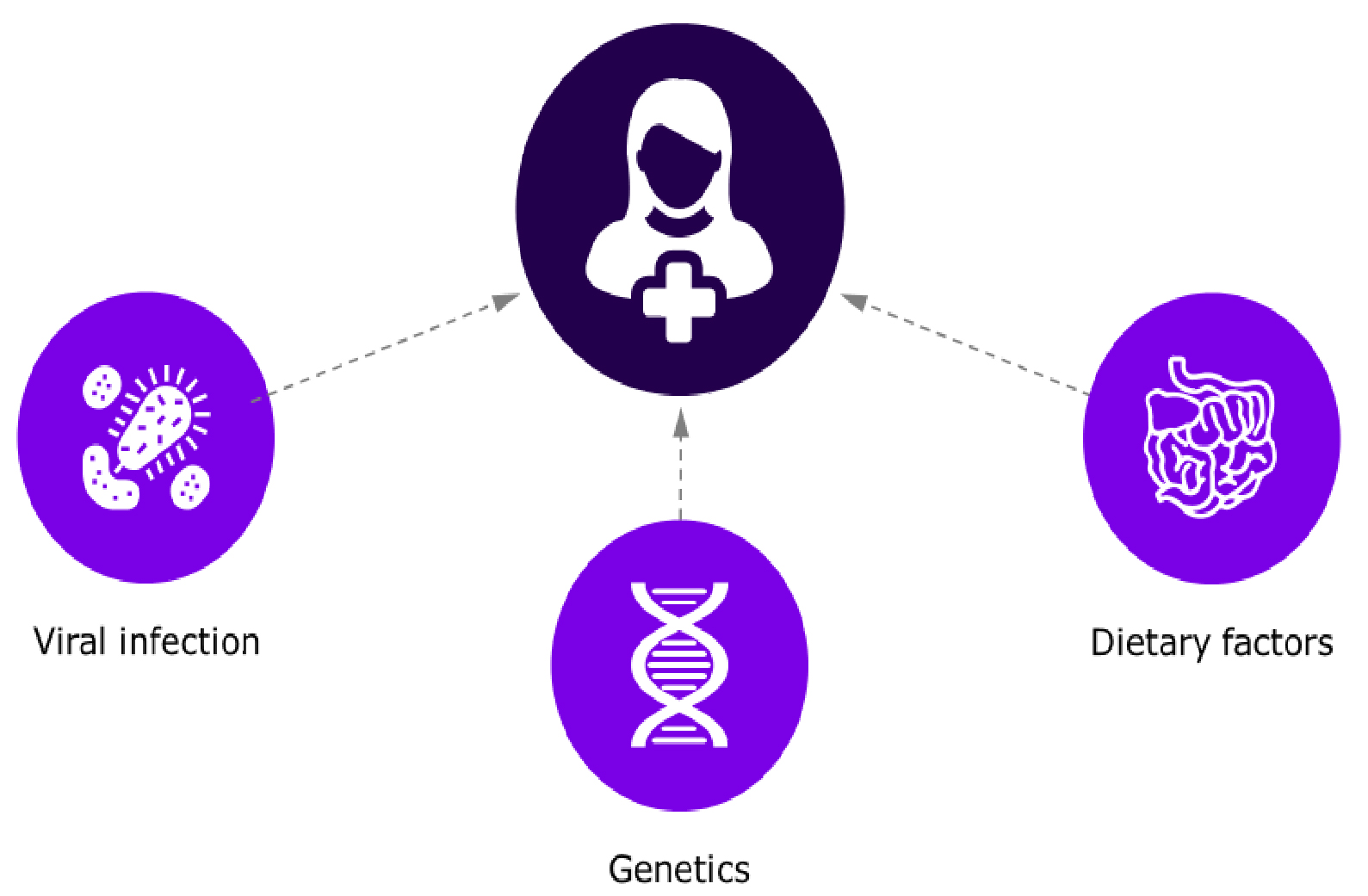
T1D is an autoimmune disease caused by an autoimmune response against pancreatic beta cells3
 |
T1D is not primarily a metabolic disease; in T1D, the immune system attacks pancreatic beta cells, hindering their ability to produce insulin3 |
 |
The body is no longer able to produce insulin once beta cells have been destroyed by the immune system3 |
 |
Lack of production of insulin leads to hyperglycaemia3 |
 |
A criticial deficiency of insulin causes DKA to occur8, a traumatic event which can have a lasting negative impact on brain function 1,9 |
DKA,diabetic ketoacidosis; T1D, type 1 diabetes.
AUTOIMMUNE T1D CAN START LONG BEFORE SYMPTOMS ARISE1
The rate of autoimmune T1D progression varies significantly; it can take months to decades for symptoms to develop.1,6
.png) |
70% of children with multiple autoantibodies progress to symptomatic autoimmune T1D within 10 years.*10 |
5-year risk of progressing to symptomatic autoimmune T1D (Stage 3)6:
|
From Stage 1
|
From Stage 2
|
The lifetime risk of progressing to symptomatic autoimmune T1D (Stage 3) from Stages 1 and 2 approaches 100%. 6


Screening can transform lives by detecting the condition before symptoms develop.6,8,9
IQR, interquartile range; T1D, type 1 diabetes.
*In a pooled analysis of three prospective cohort studies including children from Colorado, Finland and Germany, progression to autoimmune T1D at 10-year follow-up after autoantibody seroconversion in 585 children with multiple autoantibodies was 69.7% (95% CI, 65.1%-74.3%).10
Autoimmune T1D is a progressive condition; the decline of beta cell function can begin months to years before symptoms appear.1,5,6
.png/jcr:content/Asset%204@2x%20(3).png)
People with autoimmune T1D progress through three clinically distinct stages as their beta cells are progressively destroyed.4,6,7
The lifetime risk of progressing to symptomatic autoimmune T1D (Stage 3) from Stages 1 and 2 approaches 100%. 6

Screening can transform lives by detecting the condition before symptoms develop.6,8,9
T1D, type 1 diabetes.
*Reversion to single autoantibody or negative status can occur in some people with previously confirmed multiple autoantibody positivity.4
- DiMeglio LA, Evans-Molina C, Oram RA. Lancet. 2018;391(10138):2449-246.
- Gregory GA, Robinson TIG, Linklater SE, et al. Lancet Diabetes Endocrinol. 2022;10(10):741-760.
- Wolfsdorf JI, Glaser N, Agus M, et al. Pediatr Diabetes. 2018;19(Suppl 27):155-177.
- Phillip M, Achenbach P, Addala A, et al. Diabetes Care. 2024;47(8):1276-1298.
- Marré ML, James EA, Piganelli JD. Front Cell Dev Biol. 2015;3:67.
- Insel RA, Dunne JL, Atkinson MA, et al. Diabetes Care. 2015;38(10):1964-1974.
- Sims EK, Besser REJ, Dayan C, et al. Diabetes. 2022;71(4):610-623.
- Narendran P. Diabetologia. 2019;62(1):24-27.
- Raab J, Haupt F, Scholz M, et al. BMJ Open. 2016;6(5):e011144.
- Ziegler AG, Rewers M, Simell O, et al. JAMA. 2013;309(23):2473-2479.
- Barker JM. J Clin Endocrinol Metab. 2006;91(4):1210-1217.
- Głowińska-Olszewska B, Szabłowski M, Panas P, et al. Front Endocrinol (Lausanne). 2020;11:476.
- Ludvigsson JF, Ludvigsson J, Ekbom A, et al. Diabetes Care. 2006;29(11):2483-2488.
- Skov J, Kuja-Halkola R, Magnusson PKE, et al. Eur J Endocrinol. 2022;186(6):677-685.
- Biondi B, Kahaly GJ, Robertson RP. Endocr Rev. 2019;40(3):789-824.
- Cárdenas-Roldán J, Rojas-Villarraga A, Anaya JM. BMC Med. 2013;11:73.
- Karges B, Prinz N, Placzek K, et al. Diabetes Care. 2021;44(5):1116-1124.
- Besser REJ, Bell KJ, Couper JJ, et al. Pediatr Diabetes. 2022;23(8):1175-1187.
- Morran MP, Vonberg A, Khadra A, et al. Mol Aspects Med. 2015;42:42-60.
- Muñoz C, Floreen A, Garey C, et al. Clin Diabetes. 2019;37(3):276-281.
- Allen LA, Taylor PN, Gillespie KM, et al. Lancet Diabetes Endocrinol. 2023;11(10):755-767.
- Weires MB, Tausch B, Haug PJ, et al. Exp Clin Endocrinol Diabetes. 2007;115(10):634-640.
- Parkkola A, Härkönen T, Ryhänen SJ, et al. Diabetes Care. 2013;36(2):348-354.
- Allen C, Palta M, D’Alessio DJ. Diabetes. 1991;40(7):831-836.
- American Diabetes Association. Genetics of diabetes. Accessed October 1, 2024. https://diabetes.org/about-diabetes/genetics-diabetes
- el-Hashimy M, Angelico MC, Martin BC, et al. Diabetes. 1995;44(3):295-299.
- Besser REJ, Ng SM, Gregory JW, et al. Arch Dis Child. 2022;107(9):790-795.
- Hummel S, Carl J, Friedl N, et al. Diabetologia. 2023;66(9):1633-1642.
- Tomic D, Craig ME, Magliano DJ, et al. Diabet Med. 2024;41(1):e15218.
- AbuHammad GAR, Naser AY, Hassouneh LKM. BMC Endocr Disord. 2023;23(1):102.
- Cameron FJ, Scratch SE, Nadebaum C, et al. Diabetes Care. 2014;37(6):1554-1562.
- Ghetti S, Kuppermann N, Rewers A, et al. Diabetes Care. 2020;43(11):2768-2775.
- Duca LM, Wang B, Rewers M, et al. Diabetes Care. 2017;40(9):1249-1255.
- Ziegler AG, Kick K, Bonifacio E, et al. JAMA. 2020;323(4):339-351.
- Elding Larsson H, Vehik K, Bell R, et al. Diabetes Care. 2011;34(11):2347-2352.
- Hekkala AM, Ilonen J, Toppari J, et al. Pediatr Diabetes. 2018;19(2):314-319.
- Winkler C, Schober E, Ziegler AG, et al. Pediatr Diabetes. 2012;13(4):308-313.
- Nakhla M, Cuthbertson D, Becker DJ, et al. JAMA Pediatr. 2021;175(5):518-520.
- TRIGR Study Group. Pediatr Diabetes. 2007;8(3):117-137.
- Barker JM, Goehrig SH, Barriga K, et al; DAISY study. Diabetes Care. 2004;27(6):1399-1404.
- Veijola R, Koskinen M, Helminen O, et al. Pediatr Diabetes. 2016;17(Suppl 22):25-30.
- Martinez MM, Spiliopoulos L, Salami F, et al. Clin Diabetes Endocrinol. 2022;7(1):23.
- Sousa GR, Pober D, Galderisi A, et al. Circulation. 2019;139(6):730-743.
- Zakir M, Ahuja N, Surksha MA, et al. Cureus. 2023;15(9):e45835.
- Fowler MJ. Clin Diabetes. 2008;26(2):77-82.
- Rawshani A, Sattar N, Franzén S, et al. Lancet. 2018;392(10146):477-486.
- Moore DJ, Leibel NI, Polonsky W, et al. Int J Gen Med. 2024;17:3003-3014.
- Quinn LM, Rashid R, Narendran P, et al. Br J Gen Pract. 2022;73(726):36-39.
- Rikos N, Mpalaskas A, Fragiadaki M, et al. Nurs Rep. 2022;12(3):564-573.
- Jönsson L, Lundqvist P, Tiberg I, et al. Scand J Caring Sci. 2015;29(1):126-135.
- Diabetes and emotional health - Chapter 3: Diabetes distress. Accessed October 1, 2024. https://professional.diabetes.org/sites/default/files/media/ada_mental_health_workbook_ chapter_3.pdf
- Ospelt E, Hardison H, Rioles N, et al. Clin Diabetes. 2024;42(1):17-26.
- AsktheExperts. T1D info for providers. Accessed October 1, 2024. https://asktheexperts.org/ for-providers
- Edelman S. J Fam Pract. 2023;72(Suppl 6):S19-S24.
- Juvenile Diabetes Research Foundation. New guidance sets out how to support people with early- stage type 1 diabetes. Published June 2024. Accessed October 1, 2024. https://jdrf.org.uk/ news/new-guidance-sets-out-how-to-support-people-with-early-stage-type-1-diabetes/
- ElSayed NA, Aleppo G, Aroda VR, et al. Diabetes Care. 2023;46(Suppl 1):S19-S40.
- Krischer JP; Type 1 Diabetes TrialNet Study Group. Diabetologia. 2013;56(9):1919-1924.
- Hope SV, Wienand-Barnett S, Shepherd M, et al. Br J Gen Pract. 2016;66(646):e315-322.
- Type 1 Diabetes Index. T1D Index factsheet: GLOBAL. Accessed October 1, 2024. https://t1dindex.shinyapps.io/dashboard/
- Type 1 Diabetes Index. A campaign guide to launch the T1D Index. Accessed October 1, 2024. https://www.t1dindex.org/wp-content/uploads/2022/09/Campaign-Guide.pptx-2.pdf
- Sims EK, Besser REJ, Dayan C, et al. Screening for type 1 diabetes in the general population: A Status Report and Perspective. Diabetes. 2022;71(4):610-623.
- Narendran P. Screening for type 1 diabetes: are we nearly there yet? Diabetologia. 2019;62(1):24-27.
- DiMeglio LA, Evans-Molina C and Oram RA. Type 1 diabetes. Lancet. 2018;391(10138):2449-2462.
- Ospelt E, Hardison H, Rioles N, et al. Understanding Providers’ Readiness and Attitudes Toward Autoantibody Screening: A Mixed-Methods Study. Clin Diabetes. 2024;42(1):17-26.
- ElSayed NA, Aleppo G, Aroda VR, et al. Addendum. 2. Classification and diagnosis of diabetes: Standards of Care in Diabetes-2023. Diabetes Care. 2023;46(Suppl 1):S19-S40.
- Ha J, Cree-Green M, Chung ST, et al. Editorial: Metabolic estimates during glucose challenge tests and continuous glucose monitoring-Innovative and broad approaches to assessing glucose and insulin metabolism in diverse populations. Front Physiol. 2022;13:1112502.

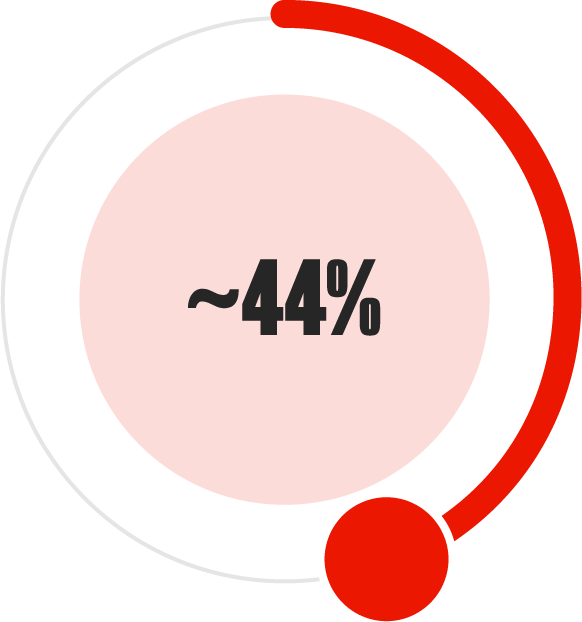.png)
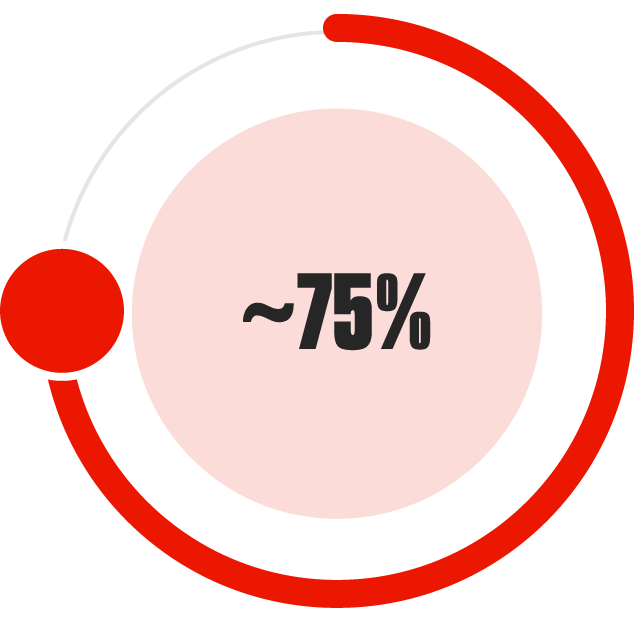.png)
